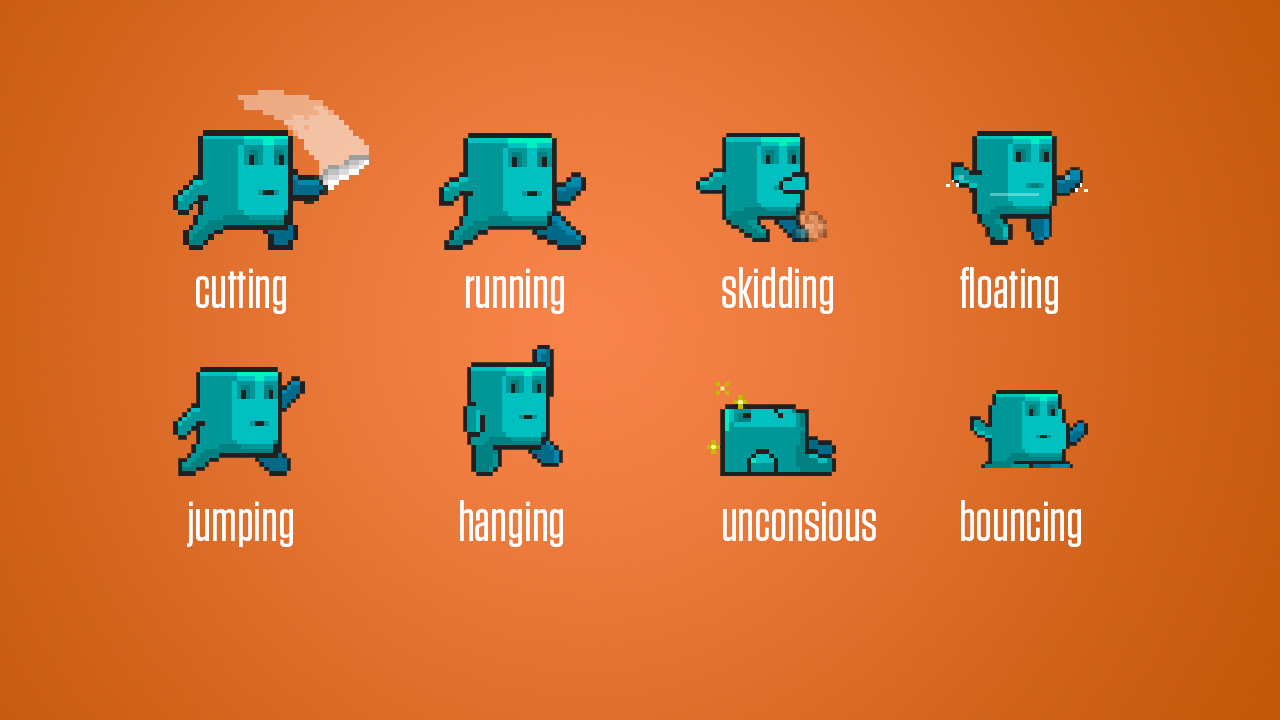Platformer Game Sprites

How to Make a Platform Game in Game Maker. This will require a little bit of experience with Game Maker. Don't do this for your first game. Make a simple block sprite. Penguin character sprites to walk, jump, and get hurt!
Learn how to make a platform game like Super Mario Brothers in this Sprite Kit tutorial! Game Development Stack Exchange is a question and answer site for professional and independent game developers. Free to use resources for 2d platformer Sprites.
Elwave 10. Contents • • • • • • Creating the Platformer Sprite The platformer is the controlled by the player. Its appearance can affect gameplay slightly, depending on the angles and size of its. For example, a character saved from a deadly fall because the brim of her hat snagged on a ledge may lessen the realism of a game. Sprites which are animated by dint of costume changes can be even more tricky. Below is an example of a simple script for a platformer sprite. It uses two: • 'X velocity' stores a value representing the sprite's horizontal speed.
It was set as a local variable by checking the option 'For this sprite only' in the creation. This means (i) the variable can only be changed by scripts in the same sprite, (ii) the variable name does not needlessly clutter the variable pane of other sprites, and (iii) the same variable name may be used in other sprites without causing conflicts. • 'Gravity' stores a value reflecting the strength of the sprite's tendency to fall. In this example it is set as a negative number because moving a sprite downwards requires making the value of its smaller. 'Gravity' need not be set as a local variable; a realistic game would subject all its characters to the same gravitational force. When green flag clicked set [Gravity v] to [-5] forever if then// Using 'else' saves processing later If's unnecessarily.
Set [X velocity v] to [-4] else if then set [X velocity v] to [4] else set [X velocity v] to [0] //No arrow keys means no movement. End end if >then //Sprite falls till touching ground. Change y by (Gravity) end change x by (X velocity) end Making Levels Colors can be used in a platform for detection of the end of a level or an object which sends one back to the beginning of the level. For this tutorial, assume the following: • The character sprite performing the physics is named 'Player' • Black is the color of the platform, or ground and walls, in which the character cannot pass through • Red is the color that sends one back to the beginning of the level he or she is on • Yellow is the color which must be reached to move on to the next level • Backgrounds are used as levels instead of sprites • is not incorporated The shapes do not need to be geometric, but can be organic, meaning an unordinary, inconsistent structure. There can be curvature to the various colors and platforms, which can be used to create diverse, numerous levels. The following image displays an example of some organic shapes being used: When the levels are designed as in the, add the following script to the 'Player' sprite: when gf clicked forever if then //if in contact with the color red go to x:(-180) y:(-47) //relocate to the start end if then //if at the end of a level go to x:(-180) y:(-47) //relocate to the start switch backdrop to [next backdrop v] //next level end The scripts within the 'forever' loop can be merged with the larger physics script shown farther above.